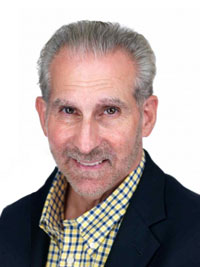 Corporations are separate legal entities that have privileges that are distinct from its members, and they enjoy limited liability (at least most of the time). Although corporations are not “natural persons,” they have rights and responsibilities as do people. They enjoy “the best of all possible worlds.”
Corporations are separate legal entities that have privileges that are distinct from its members, and they enjoy limited liability (at least most of the time). Although corporations are not “natural persons,” they have rights and responsibilities as do people. They enjoy “the best of all possible worlds.”
The word “corporation” comes from the Latin, corpus, meaning body. Unlike humans, corporations can exist in perpetuity. They outlive us all. They are sanctuaries; they are sheltered and protected.
It is very difficult to get into a corporation unless one is invited. They guard their territory assiduously and with fervor. They are living personifications and bastions of self-interest.
The basic human issue here, however, is that corporations are made up of and are run by people; and generally they deal with, or serve people. Human factors must be taken seriously. Whenever these factors are neglected, the sustainability of the corporation is threatened, and shareholder value can suffer.
At that point shareholder activism must rear its head and take charge. Corporate sustainability is a delicate balance which requires monitoring and tuning on a consistent basis.
Corporate governance and financial responsibility are necessary constructs in business culture. Investors need to have confidence in “civilized, rational behavior;” they need to believe that the Street is not the jungle regardless of abundant signs of “money-madness.”
Wild Game Theory & Practice
My sons and I, recently, spent several days at Monwana Lodge in the Thornybush Game Reserve outside of Kruger National Park in the northeast area of South Africa. The Reserve is a sanctuary akin to a corporation. It is managed, balanced, insulated, and protected. It is a world onto its own.
It’s all about survival, prosperity, power, dominance, and control in the Reserve and on the Street. The “money and profit” motives “in the bush” revolve around life itself, sustainability, and survival at the most basic level. In the Reserve, the longer you live, the “wealthier” you are regardless of your species. Weaker and more vulnerable species are more plentiful and they travel in large herds, especially Impalas and African Antelope.
Life is managed and regulated in the Reserve, and it works. On the Street, it’s not quite as smooth and well managed. There are cycles, retrenchments, corrections, free-falls, panic, and bubbles galore.
Our guide and ranger, Ryan Fulton, had been in the bush for 30 years. Our tracker, Brian, grew up in the bush. They are consummate bush professionals and wildlife conservationists. We saw the Big 5 up front and personal: Elephant, Lion, Rhino, Leopard and Water Buffalo, and a variety of other species.
We were also most fortunate to see a “kill;” a Cheetah brought down and devoured a baby Impala in the backyard of our Lodge. On a game drive the following night we spied a Leopard in the deep bush feasting on a Warthog. Predators gorge themselves, literally pass out, and then go back at it. They can store enough food for more than a week and they can sustain themselves, generally, for up to five days between watering.
On the Street, life and survival are more complicated.
Making a “killing” on the Street is a popular fantasy, and at times an obsession. It satisfies our primitive instincts, and makes us feel superior and safe. Certain firms specialize in the acquisition of distressed companies. These firms are predatory and opportunistic; this is their business model.
More money usually factors out to better life style. However, on the Street it’s not only about survival. It’s about power, control, freedom, and image. These factors constantly interweave and color “Street life.”
Our Ranger trained us up in terms of “wild game personal space” theory. Animals are very sensitive to space, distance, and territory. There is a “comfort zone” range, generally 15 to 40 feet, depending on the animal. As one moves closer, one enters the “alert” zone; and the animal takes notice. Even closer, one approaches the “warning” zone. If one dares to move even closer one is right there: the “critical” zone.
At this juncture it’s “fight or flight” for wild game. And probably for us too, or it certainly should be: Danger! It’s all about survival in the bush and on the Street. Investors often must divest quickly on occasion and “get out while the getting’s good.” Corporations are sensitive about who let into the critical zone: the board room.
Survival: of the fittest, the quickest, the most cunning, and the cagiest. We fall in love with our portfolios; we get attached to the companies we co-own, our shares, our brokers, and even their sales assistants.
Human nature. We want to get close, we want to feel attached. And yet we must survive. At times, we must “cut bait and run” regardless of sentiment in order to preserve capital. Cutting one’s losses is a judicious strategy. But for most of us it can be painful. We must be dispassionate. These are conflicting human states of being: attachment versus survival and safety.
Perhaps the most prosperous and successful hedge fund players have it down. They personify the dispassionate if they are really successful. Their attachment skills are finely tuned, but capable of lightening quick short circuitry. They have to be. That’s why they make the really big bucks.
Shareholder Activism Rules of Survival
Shareholders and investors want to be close to the companies they own and cherish. It can all become “bigger than life.” We inject and project our feelings into our portfolios. We try to enliven our positions. We try to make them more than they are. We become attached. We personalize. We fall prey to embracing and cherishing our positions. Until, of course, we are forced to mobilize our activist yearnings which are predicated on getting a “fair deal,” and making sure “things are run right.” All about stewardship.
Let’s flip it over. What do the corporations we co-own think of us? In my practice, I have worked with Investor Relations Specialists. There is an uneasy interdependcy between management and shareholder. When push comes to shove, management works for us. We have power, but we rarely realize it, let alone apply it. We do have the tools and tactics for corrective action.
This is a major part of what The Shareholder Activist brings to the table. We all want to stay out of the critical zone. We want to be comfortable with each other, at an appropriate distance. We need and require new models of interaction and respect with the companies we co-own, and them with us. Time will tell. Bottom line: there’s never a dull moment (for long) in the bush, or on the Street.
To contact Christopher Bayer directly, please email Christopher.Bayer@TheShareholderActivist.com.








